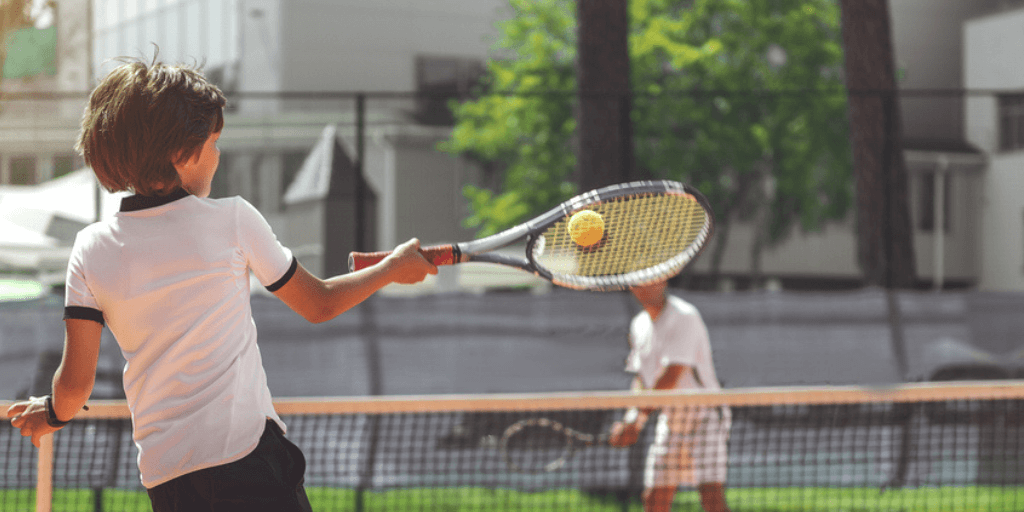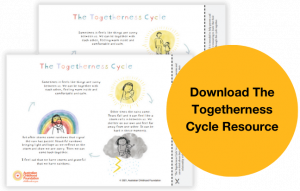
Tennis lessons: using tennis to explore rupture and repair with a ten-year-old
‘Tennis lessons: using tennis to explore rupture and repair with a ten-year-old’ blog article was written by Chris Cussen, Lead of Product Development, Content Creation, and Projects for Therapeutic Services at Australian Childhood Foundation.
Our son is ten years old, and over these summer holidays, he has suddenly discovered tennis.
We watched the Australian Open (AO) and played tennis together at a local court. He can’t get enough of it. At home, he plays with his racquet and a soft ball that he serves down the corridor as he commentates on imaginary matches against Djokovic and Kokkinakis.
He told me his favourite part of tennis is when a player makes a great shot that gets past the other player. He asked me what I like the most about tennis. I had not really thought about that before. I said I like long rallies and that players get two goes at serving if they need it. If you are not familiar with tennis, each time it is your turn to serve, you get a free do-over if you are not successful with your first serve. A player’s second serve is often softer than their first, just to make sure that it goes in so the point can continue. I find it interesting that somewhere in the history of tennis, they made up the rule that you get another go.
‘Do-overs’ are so important, not just in tennis. None of us should be expected to always get things right every time we offer something up to another.
If we liken tennis to a conversation between people, tracked by the ball travelling from one side of the court to the other, then a first serve that goes into the net could be thought of as a rupture to the conversation, which is most often repaired when the server has another go.
There is probably no one who has studied rupture and repair more closely with people in the lab than Ed Tronick. His experimentation with the ‘still face paradigm’ is well known.
Tronick said that his initial focus in these studies was the effect of the rupture established when the caregiver takes on a still face in front of their child. These days, however, he is looking more closely at the point when the caregiver returns to freely interacting with the child after they snap out of their frozen facial expression. Many call this the point of ‘interactive repair.’
Tronick has said, ”We came to recognize that repair is the crux of human interactions. Repair leads to a feeling of pleasure, trust, and security, the implicit knowledge that I can overcome problems. Furthermore, repair teaches a critical life lesson: The negative feeling that arises from a mismatch (rupture) can be changed into a positive feeling when two people subsequently achieve a match. One does not have to get stuck in a negative feeling state”.
Repair helps the child know that life is filled with inevitable moments of misunderstanding and missed connections that can be re-established and connected again.
It turns out that striving to be in connection with others at all times is not the end game; rather, attempting to re-connect after you fall out of connection is a piece of the puzzle that is just as important.
It is interesting that playing tennis together is often referred to as a tennis match, not a tennis game.
At home, as these holidays draw to an end and our two children start to get irritable with one another, we have taken to instituting a new AO guideline. When tensions rise, and someone says or does something that is unkind or hurtful towards the other, any of us can say in our best umpire’s voice, ‘Fault One… Second Serve.’ I don’t love the word ‘fault’, but that’s what they use in tennis, and we understand it means- let the first serve go and try again, this time maybe make it a bit softer.
Here is a resource that depicts the rupture (mismatch) / repair cycle with caregivers and their children at three different points across childhood. Please use it and feel free to share it widely.
Tronick, E & Gold, C. (2020) The Power of Discord: Why the Ups and Downs of Relationships are the Secret to Building Intimacy, Resilience, and Trust. Little, Brown Spark. New York.
Subscribe to the Professionals Newsletter
Join our community of more than 40,000 professionals from around the world who receive our weekly newsletter containing articles. Our newsletters help connect you to our blog, research, and free resources as they are produced. We also keep you informed on training opportunities including access to experts in the field, webinars, international speaker tours, conferences and more.

